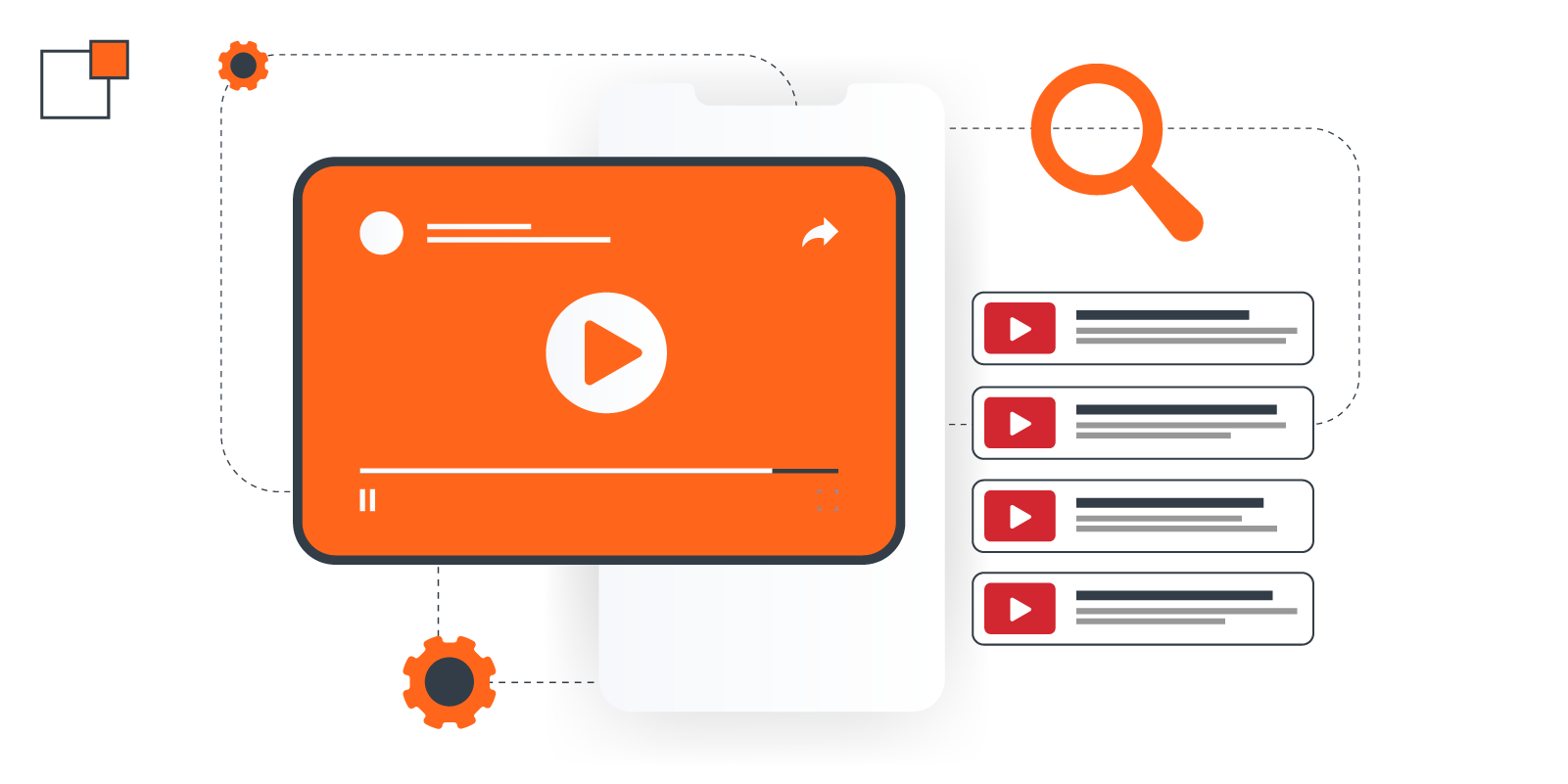Mastering YouTube
How to build a successful YouTube strategy
YouTube is one of the most powerful platforms for brands and marketers to connect with their audience, but with millions of videos uploaded daily, simply posting content isn't enough. To truly make an impact, you need a well-thought-out strategy that revolves around understanding your audience, planning your content and optimizing for visibility.
Think of it like planning a road trip: you need a destination (your goals), a map (your strategy) and a playlist (your content) that’ll keep your audience engaged from start to finish. If you ignore your plan or even start your YouTube channel without a clear map, there’s a high chance you’ll get lost and develop off-brand or inconsistent content, confusing your audience to the point of disengagement.
For marketers and brands, understanding your target audience is foundational to any successful marketing initiative, and YouTube is no different. Your audience should be at the center of every decision, from content creation to distribution. Start by clearly defining your niche—this is where your brand's expertise and the needs of your audience intersect. A well-defined niche allows you to tailor content that resonates deeply with your target market, ensuring that your videos provide real value.
Next, conduct a thorough competitor analysis to see how other brands engage with your shared audience. This will help you identify opportunities to differentiate your content and better meet the needs of your viewers. By examining what works and what doesn’t for your competitors, you can fine-tune your strategy to stand out.
Remember, the goal is to not only understand who your audience is but also how to effectively engage them through content that meets their specific. To do this, you’ll need to think through your strategy:
Within your calendar, choose a posting schedule that you can realistically keep up with, whether it’s weekly, bi-weekly or monthly. The important thing is to stick with it, as regular uploads help build a loyal audience.
 A content calendar should also line up with your larger marketing goals, like launching products or running seasonal promotions and provide a plan to create a variety of content such as tutorials, product demos or behind-the-scenes looks.
A content calendar should also line up with your larger marketing goals, like launching products or running seasonal promotions and provide a plan to create a variety of content such as tutorials, product demos or behind-the-scenes looks.
Keep an eye on your YouTube Analytics to track performance and refine your strategy as you go. This method ensures a steady flow of new viewers while keeping your existing audience engaged and excited about your content.
Okay, so we’ve covered the value of a calendar, when and what to post – now it’s time to talk about optimization. Without it, even if you produce an Oscar-worthy video, you won’t get very far.
YouTube is the second largest search engine in the world, so in order to get discovered by new audiences, optimizing your videos for search should be a priority. Start with thorough keyword research to identify the terms your target audience is searching for. Use tools like Google Keyword Planner or TubeBuddy to find relevant keywords with high search volume and moderate competition. Integrate these keywords strategically into your video titles, descriptions and tags to get the best visibility. Keep the title short and compelling with primary keywords, and use the description to get into the details with secondary keywords to support search engine visibility.

While a properly optimized title, description and tags are important, they are not the only things you need to think about! Thumbnails are another element that plays a crucial role in YouTube SEO. Critical for attracting clicks, thumbnails should be visually appealing, clearly convey the video’s topic and be consistent with your brand's style.
To further support optimization, be sure to leverage YouTube’s built-in tools for promoting content. Use end screens and cards effectively to direct viewers to other videos or playlists, boosting watch time, which is a critical factor in YouTube’s ranking algorithm.
With consistent effort and optimization, your YouTube channel will be on its way to gaining traction and growing your community. But to help boost this, you can encourage likes, shares and subscriptions through clear and engaging calls to action (CTAs) in your videos. The more engagement your video receives, the higher it’s likely to rank in YouTube's search results, increasing your chances of reaching a wider audience.
Consider cross-promoting your videos across all your social media platforms. Share longer, educational content on LinkedIn, while the shorter, more trend-forward videos you make for YouTube shorts are perfect for platforms like Instagram and TikTok.
Ready to get your YouTube channel off the ground? thunder::tech has a team of experts ready to help. From developing a content plan to helping produce your videos, we’re here to help you meet your marketing goals. Let’s connect!
Think of it like planning a road trip: you need a destination (your goals), a map (your strategy) and a playlist (your content) that’ll keep your audience engaged from start to finish. If you ignore your plan or even start your YouTube channel without a clear map, there’s a high chance you’ll get lost and develop off-brand or inconsistent content, confusing your audience to the point of disengagement.
Who are you marketing to?
For marketers and brands, understanding your target audience is foundational to any successful marketing initiative, and YouTube is no different. Your audience should be at the center of every decision, from content creation to distribution. Start by clearly defining your niche—this is where your brand's expertise and the needs of your audience intersect. A well-defined niche allows you to tailor content that resonates deeply with your target market, ensuring that your videos provide real value.
Next, conduct a thorough competitor analysis to see how other brands engage with your shared audience. This will help you identify opportunities to differentiate your content and better meet the needs of your viewers. By examining what works and what doesn’t for your competitors, you can fine-tune your strategy to stand out.
Remember, the goal is to not only understand who your audience is but also how to effectively engage them through content that meets their specific. To do this, you’ll need to think through your strategy:
Develop a content calendar
After identifying your niche, you’ll need to get realistic about your content plan. Inconsistency and poorly timed scheduling will limit your progress, and while it’s not always possible to produce high-quality content every week, creating a strategic content calendar will help you allocate resources more effectively.Within your calendar, choose a posting schedule that you can realistically keep up with, whether it’s weekly, bi-weekly or monthly. The important thing is to stick with it, as regular uploads help build a loyal audience.

When to post
Use YouTube Analytics to identify peak viewing times for your audience and plan your uploads accordingly. High-traffic periods typically occur in the late afternoon during weekdays and in the mornings on weekends, but this can vary depending on your specific audience’s habits and time zones. Scheduling videos to go live at these optimal times can boost initial viewership and engagement rates.What to post
Beyond timing and consistency, balance your content plan with a mix of evergreen videos (content that remains relevant over time) and timely, topical videos that address current trends or company events. Additionally, each video should have a clear goal, whether it's driving traffic, building awareness or increasing sales, and always tie back to your overall marketing strategy. In other words, don’t post just to post – be intentional!Keep an eye on your YouTube Analytics to track performance and refine your strategy as you go. This method ensures a steady flow of new viewers while keeping your existing audience engaged and excited about your content.
YouTube Shorts
Don’t forget about YouTube Shorts! These bite-sized videos are a great way to reach new audiences quickly. YouTube Shorts are ideal for quick, catchy content. Since they're under 60 seconds, you can get creative and share fun, snackable content that complements your longer videos. Plus, Shorts have their own section on YouTube, which gives you even more opportunities to be discovered by new viewers.YouTube SEO
Okay, so we’ve covered the value of a calendar, when and what to post – now it’s time to talk about optimization. Without it, even if you produce an Oscar-worthy video, you won’t get very far.
YouTube is the second largest search engine in the world, so in order to get discovered by new audiences, optimizing your videos for search should be a priority. Start with thorough keyword research to identify the terms your target audience is searching for. Use tools like Google Keyword Planner or TubeBuddy to find relevant keywords with high search volume and moderate competition. Integrate these keywords strategically into your video titles, descriptions and tags to get the best visibility. Keep the title short and compelling with primary keywords, and use the description to get into the details with secondary keywords to support search engine visibility.

While a properly optimized title, description and tags are important, they are not the only things you need to think about! Thumbnails are another element that plays a crucial role in YouTube SEO. Critical for attracting clicks, thumbnails should be visually appealing, clearly convey the video’s topic and be consistent with your brand's style.
To further support optimization, be sure to leverage YouTube’s built-in tools for promoting content. Use end screens and cards effectively to direct viewers to other videos or playlists, boosting watch time, which is a critical factor in YouTube’s ranking algorithm.
Cross-promote your work
With consistent effort and optimization, your YouTube channel will be on its way to gaining traction and growing your community. But to help boost this, you can encourage likes, shares and subscriptions through clear and engaging calls to action (CTAs) in your videos. The more engagement your video receives, the higher it’s likely to rank in YouTube's search results, increasing your chances of reaching a wider audience.
Consider cross-promoting your videos across all your social media platforms. Share longer, educational content on LinkedIn, while the shorter, more trend-forward videos you make for YouTube shorts are perfect for platforms like Instagram and TikTok.
Ready to get your YouTube channel off the ground? thunder::tech has a team of experts ready to help. From developing a content plan to helping produce your videos, we’re here to help you meet your marketing goals. Let’s connect!
About the Author
Gabriella Caldwell is a Digital Marketing Strategist at thunder::tech. Outside of the office she can be found in a ceramics studio sculpting away, or visiting local art galleries.
